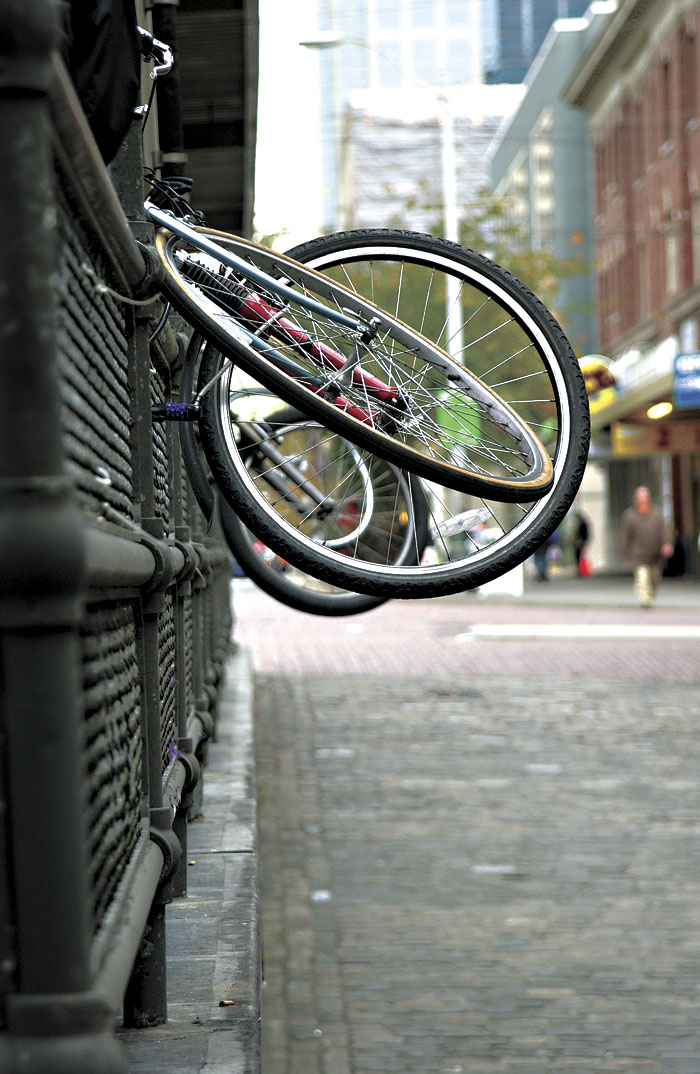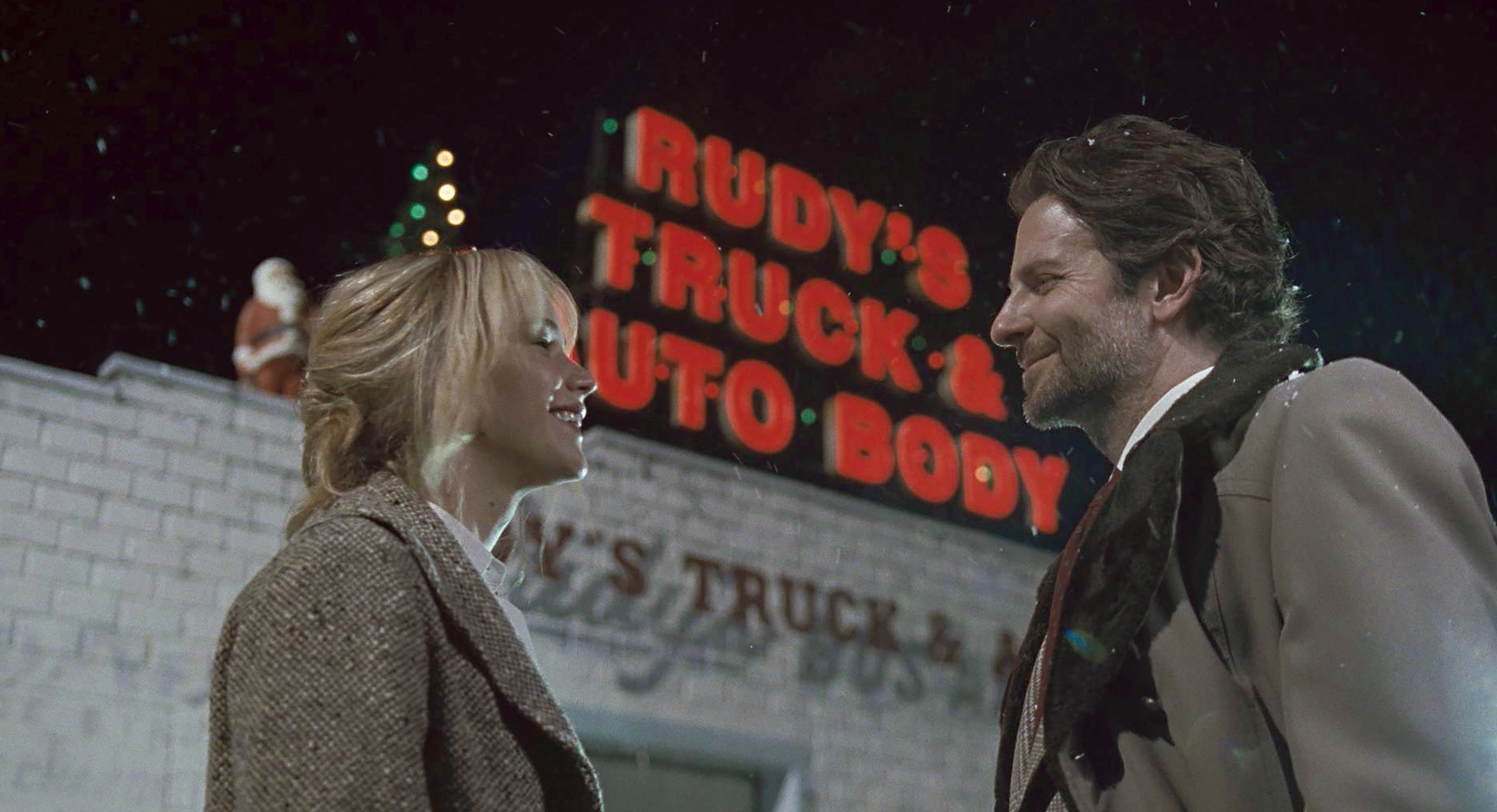Although the city and Cascade Bicycle Club reported an increase in bicycle commuters over the summer, when gas prices were at their highest, we’re now deep into fall. Until April, at least, riding can be wet and unpleasant—if not downright hazardous on slick, dark streets. Yet during our current recession, Metro buses are often packed past capacity, which may keep some penny-pinching greenies pedaling to work in the rain.
But if your employer or building owner doesn’t allow bicycles inside your office, where can you securely park your $1,000 Trek on the sidewalk? It’s the same dilemma faced by bike messengers, who often just lean their rides against doors and poke their U-locks through frame and wheel, trusting to luck. The city’s $240 million Bicycle Master Plan mandates more bike parking with new development, but not on sidewalks and other public areas in front of existing structures.
Even experienced cyclists like David Janis, executive director of the Bicycle Alliance of Washington, can have a hard time finding outside racks. “There’s a huge demand,” he says. “I think the number of bike commuters is driving that.” Of his own daily commute, Janis notes, “There are a lot of racks on Market Street in Ballard, and a lot of the time they’re completely full.” (Same thing goes at the other end of his ride in Pioneer Square.)
Megan Hoyt, who runs the Seattle Department of Transportation’s bicycle and pedestrian program, says that “the last count was approximately 3,000 bike racks.” She estimates SDOT adds about 300 street racks a year, coming in part from the roughly 200 annual requests to the city’s Web site.
Contrary to what some cyclists might think, those requests don’t have to come from property owners like your local Safeway or cinema. “Everyone can call in!” Hoyt exclaims. The racks are added at no charge, although they cost taxpayers about $500 apiece for installation. Businesses can also pay to have fancier racks installed—see outside WaMu Center—after SDOT determines that they won’t congest bus stops or building entryways. Meanwhile, as manual parking meters are gradually replaced throughout the city, some of the decapitated old poles are being retrofitted for racking.
Because SDOT crews are busy paving and striping roads during the drier summer months, rack requests typically take months to fill. “We put in the vast majority of our racks in the winter,” says Hoyt, who concedes that the lag time “is probably a bit too long.”








